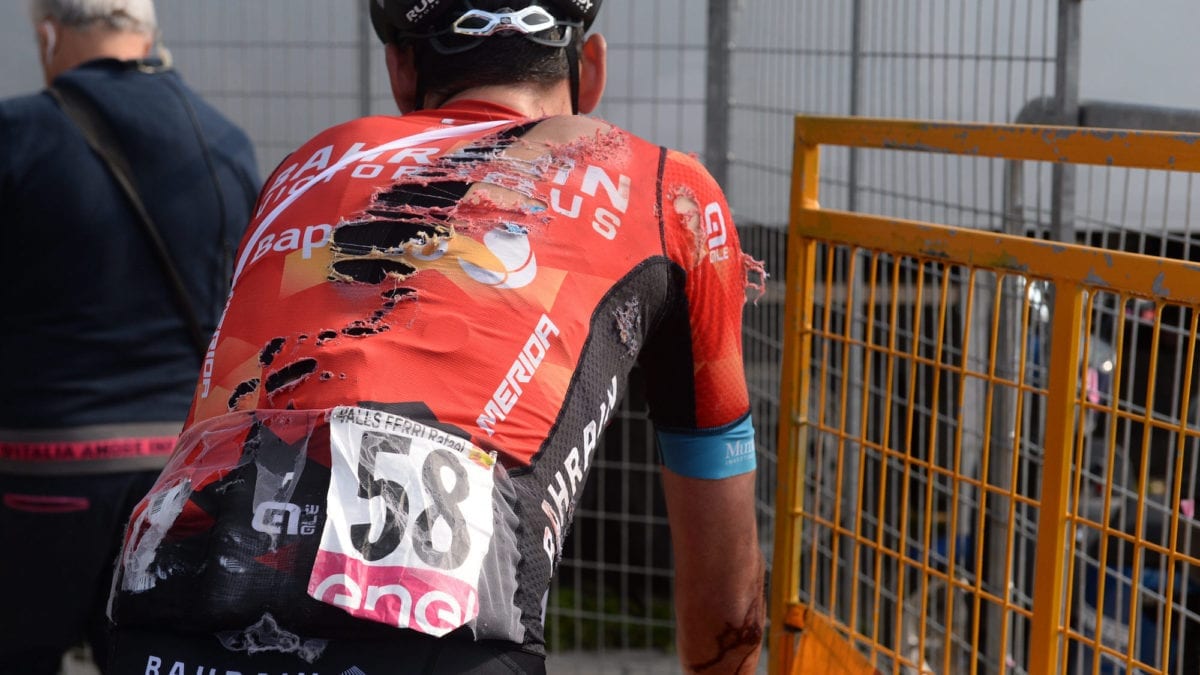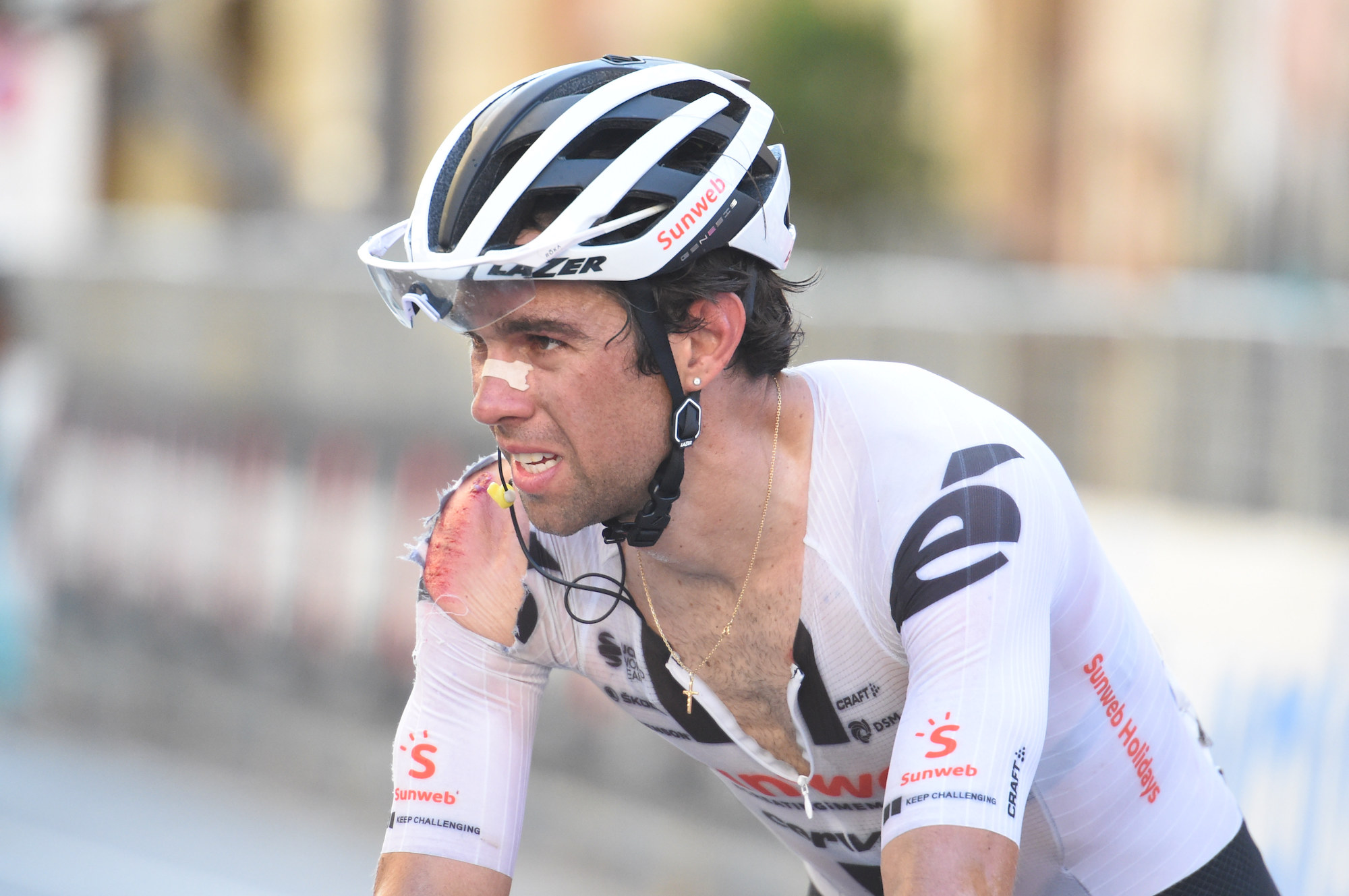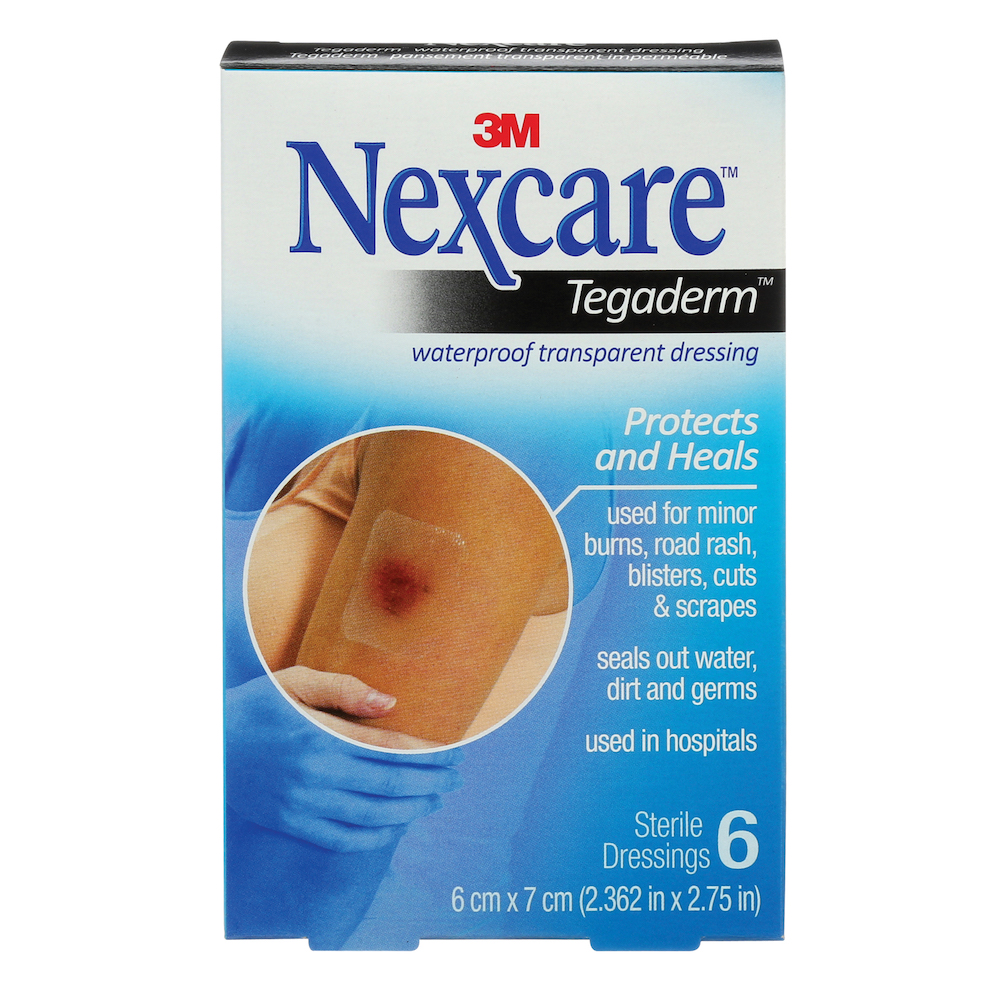8 tips for treating road rash
Crashes suck, but your skin can heal faster than you'd think
 Photo by:
Sirotti
Photo by:
Sirotti
Crashes happen to pretty much every cyclist at some point—hopefully, you, your bike and your kit aren’t too damaged when/if it happens to you. When you fall off your bike at any speed, you’re likely to have some raw patches of skin. Road rash is the name given to a patch of skin scraped off by the force of your body moving against the pavement (ow!)
Here are a few tips for dealing with road rash and healing your wounds responsibly.
Immediate care
1. Wash, clean and de-grime the skin as soon as you get the chance. Be gentle with the area when cleaning, even if it seems like a surface-level scrape you don’t want to pull off any additional skin. Pay close attention when you’re cleaning the area for gravel and road grit, it’s important to get rid of any debris that your body picked up from the road. This step can be very painful but it’s important for preventing infection.
2. Once the wound is cleaned, apply an antibiotic ointment to the rash.
Dressing
3. Cover the road rash with a dressing that will keep it moist. Some will recommend letting the wound scab over, but research on wound healing has found that keeping a wound moist allows epidermal cells to migrate across and close the wound twice as fast compared to a dry, scabbed-over wound. Preventing this scabbing and the associated fibrous tissue that forms also helps to reduce scarring.
4. A non-adherent wound dressing, such as Tegaderm, or a hydrocolloid bandage, such as Band-Aid’s Hydro Seal, will keep the road rash appropriately moist.
5. Change the dressing regularly and keep an eye on the road rash monitoring for infection—if it becomes more painful, inflamed or red contact a doctor.
Road rash tips
6. Keeping the wound moist will cause your body to produce wound exudate, the moisture that naturally seeps out from a wound site. The liquid is important for the healing process but it can be messy. To avoid unexpected leaks, when applying the wound dressing keep a small section open/unadhered at one spot on the edge and attach some gauze to absorb the excess exudate. If you’re a frequently-moving sleeper a bit of extra gauze taped over the bandage will protect your bedsheets from any accidental leaks.
7. These bandages can be expensive. Many medical supply stores carry rolls of non-adherent wound dressings, so if you’re dealing with a large surface area or want to be prepared for the possibility of a future fall it might be worth the investment.
8. Once the wound has healed enough to not require bandages, it’s important to continue diligently moisturizing it to prevent scarring. The fresh skin won’t do well in the sun, so be sure to apply sunblock to the area (and to the rest of your body.)
Road rash sucks, but give your wound a little love and you’ll be surprised how quickly your skin will get back to normal.


